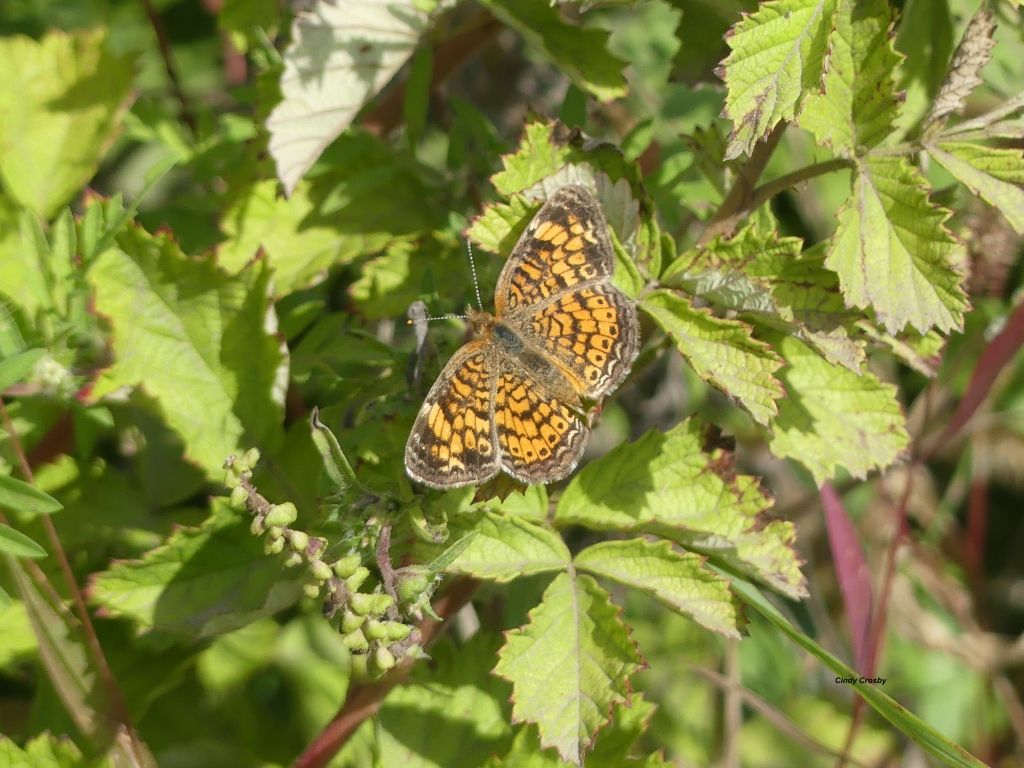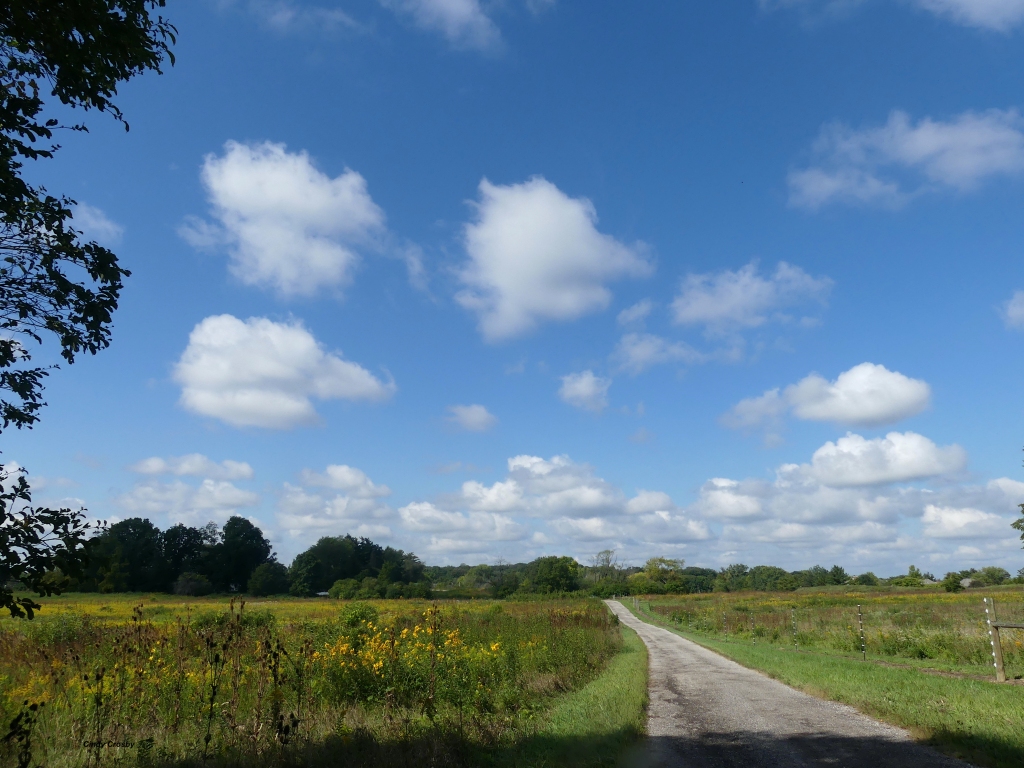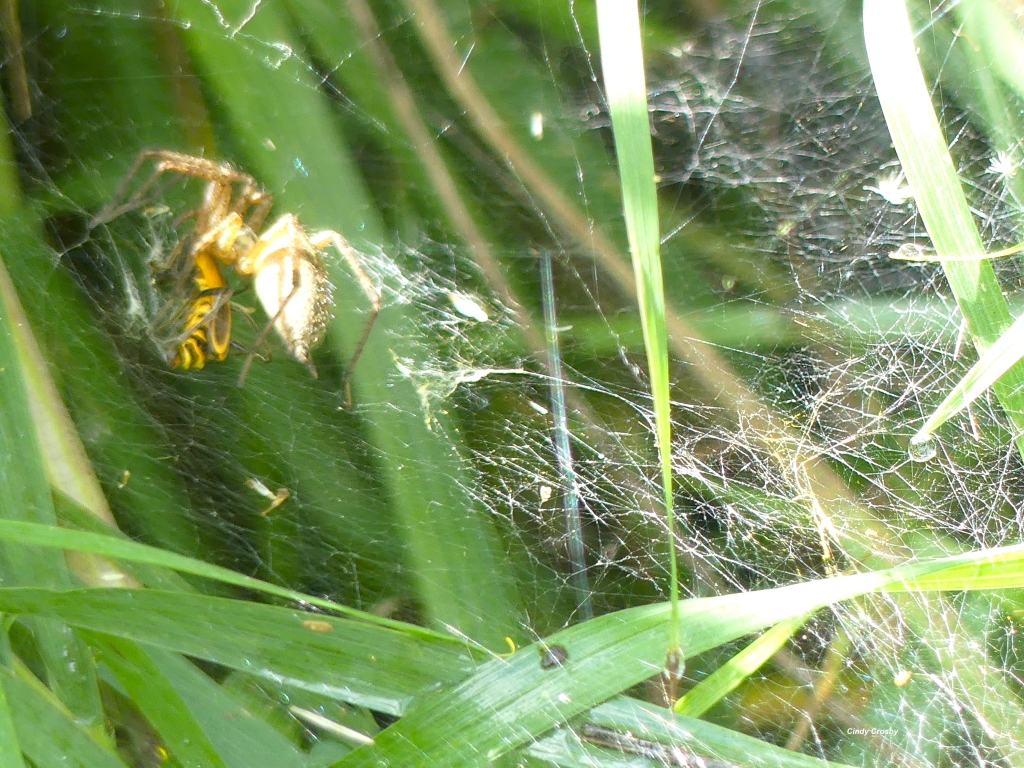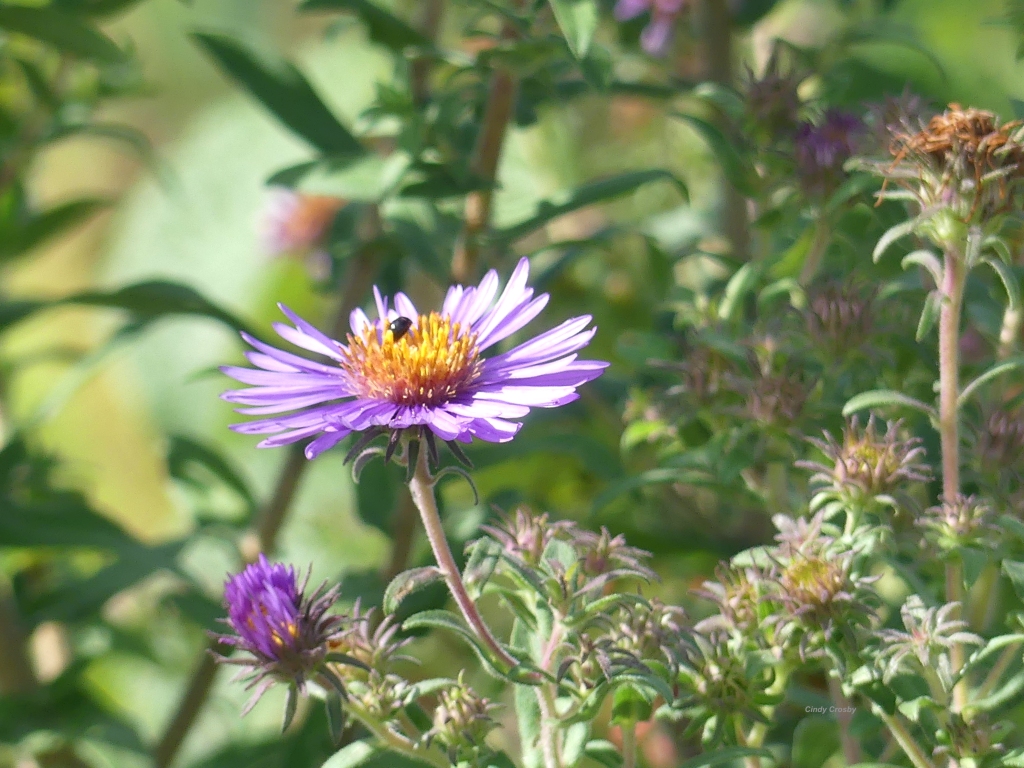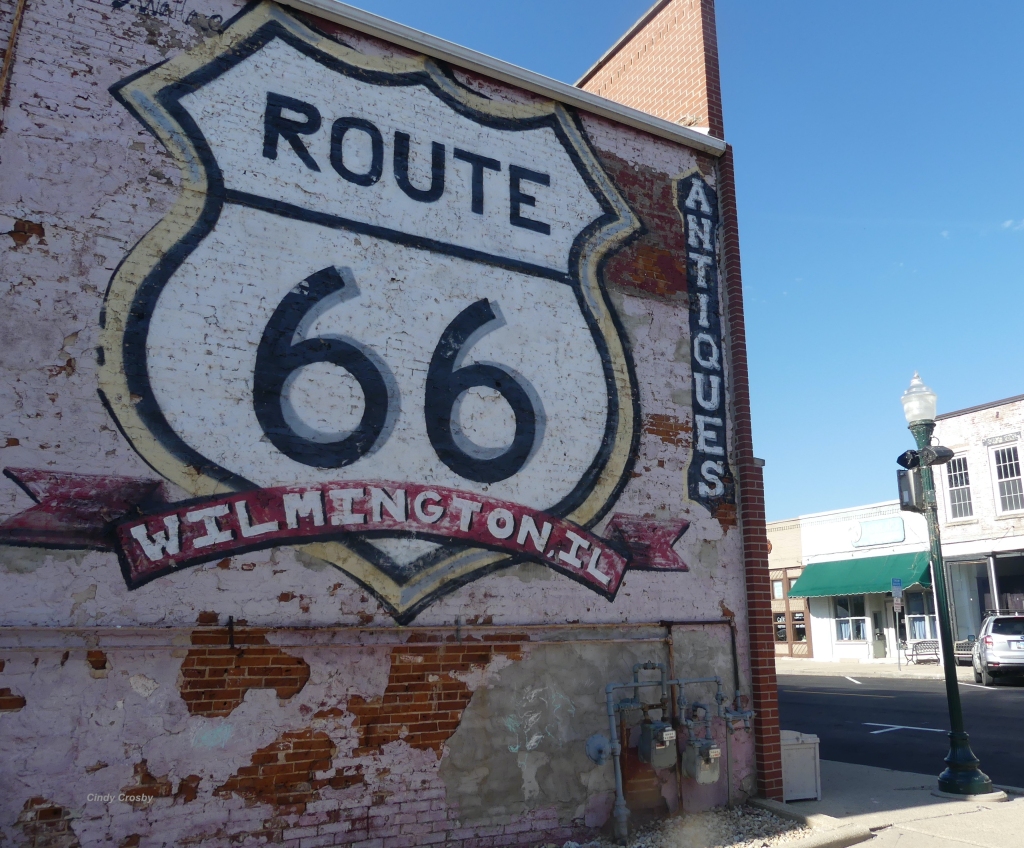“Be patient toward all that is unsolved in your heart, and try to love the questions themselves… .”–Rainer Maria Rilke
******
As we head into the autumn season, I find it good to put down my clippers and trowel for a bit to read and watch a few webinars. It’s a good time to think more deeply about prairies, gardens, and home landscapes. What are scientists and gardeners and others discovering about how our world is changing? What does that mean for us at home, in our parks, in our forest preserves, and prairies?

I recently watched a thought-provoking webinar on North American butterflies and their use of non-native plants. What is a non-native plant, you might ask? If this is a new term for you, think of non-native plants as simply plants that weren’t found where you live until they were brought there from other places. In my little corner of the world, a non-native plant might be the roadside Queen Anne’s lace, or a garden plant like zinnias, or a “weed” such as dandelions.

As a prairie steward and gardener, the question of how our native insects are using these non-native plants matters. On the prairie where I volunteer, we have the federally endangered rusty patched bumble bee. Some of the plants it uses throughout its range include some flowering non-natives, as well as the natives, like this purple coneflower.

And, as we’ve inventoried our moth populations on the Schulenberg Prairie at the Morton Arboretum, and noted what host plants they use, it is increasingly obvious that both native and non-native plants play a role as both host plants and nectar plants in our prairie community.

In my backyard, I’ve grown non-native plants like zinnias with an eye to their attraction for native bees, butterflies, other insects, and birds.
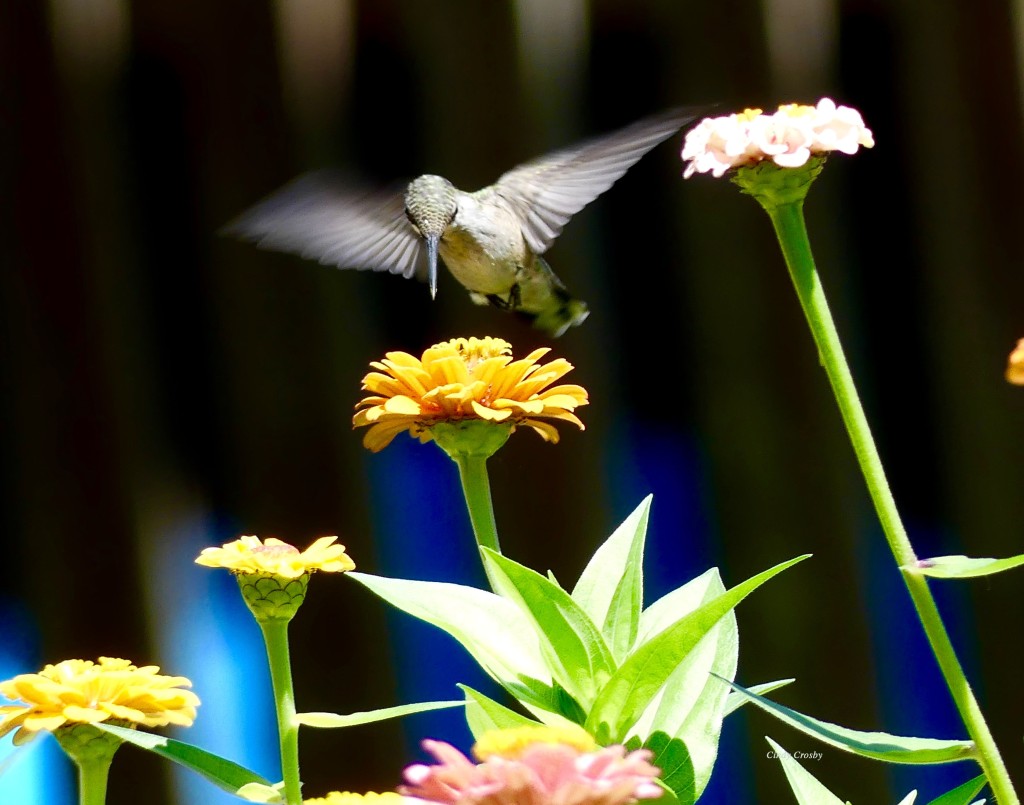
The hummingbird moths sometimes nectar at a simple basket of non-native petunias hanging in my backyard.

But what does that mean for us? Do we grow or leave some non-native plants in place? Or, will these same native prairie and garden community insects and birds prefer the natives if the non-natives are eradicated and we increase the native wildflowers we offer? After all, these natives are the plants they were originally associated with.

And do non-native plants have the same nectar value? If a monarch nectars on a zinnia instead of an aster or native prairie plant does it receive the same nutrition? As I pull weeds, I wonder. Are the insects I see using the non-native plants in my yard use them because not enough native plants are available?

These are questions scientists are asking. As climate change transforms our natural areas and backyard communities, how do we think about what we accept in our yards and natural areas in the future?

I was fascinated by the webinar I mentioned above by Dr. Heather Khorouba, a professor of biology at Ottawa, who is investigating some of these questions. The “The Role of Non-Native Plants in Butterfly Communities,” was presented by The North American Native Plant Society. If you have 90 minutes to spare, the Q&A afterwards is quite interesting, too. There are some strong opinions!

I don’t think we have all the answers, and perhaps we won’t have them for a long time. Meanwhile, I’ll keep trying to tip the balance in my backyard to 70 percent natives, work on less lawn in the front yard, and plug away each year, adding native trees, shrubs, wildflowers and grasses. I’ll also keep pulling the non-native aggressive plants—sweet clover, Queen Anne’s lace, and giant ragweed—from the prairie I help steward. We work with the best information we have at any time. I am pro native plants! But I want to keep an open mind as we learn more. Perhaps there are certain non-natives that are important enough to some of our native insect species that we need to keep a patch or two around to help our native insects and birds hang on.

Let me be clear. Invasive non-natives like sweet clover have tens of thousands of seeds, so we don’t want to let those species take over a prairie (as clover has in so many native prairie replantings of old ag fields). Queen Anne’s Lace, if we let it, would choke out any restoration we might attempt, leaving us with a monoculture of non-native plants. I don’t want that for our future. And native prairie plants, which may be sensitive to aggressive non-native plant take-overs, are necessary if we are to keep our native insects viable and healthy for the future.
But as humans, we tinker with nature. And we don’t always know how to proceed. A certain amount of humility is always necessary.

It’s complicated. Rainer Maria Rilke, whose quote opens this blog post, wasn’t talking about native plants when he wrote his famous saying, “Live the questions now. Perhaps then, someday, far into the future, you will gradually, without even noticing it, live your way into the answer.” But I agree about the questions. I certainly feel I am living them, and I bet many of you who garden and work with prairie restoration do, too. I certainly have more questions than answers when it comes to the best ways to keep our prairies and yards healthy and vibrant in a changing world.

Until we know more, I’ll keep pulling non-native plants from our prairie, asking questions, trying to put the answers we do have at work in my yard, and trying new ways of nurturing the communities I’ve been entrusted with to see what works. And honestly, I am so behind with my weeding, that there are plenty of non-native plants for my insects to use. The prairie has plenty of weeds, too!

I hope you’ll share with me what you’re learning, as well, so we can continue to keep open minds, and learn from each other. We all want a healthier world for the flora and fauna we are entrusted with. Thank goodness scientists and others are investigating these questions. I’ll continue to listen, and to learn.

Here’s to the prairie! And here’s to our gardens. May they be healthy habitats for our birds, insects, and other members of the natural world—including ourselves—for future generations to come. And may we continue to ask the questions that make them so.
*****
Rainer Maria Rilke (1875-1926) was a poet and novelist from Austria. This quote is from Letters to a Young Poet, a collection of ten of his letters to a 19-year-old officer who was trying to decide between a career in the military or a literary life. Read more about his correspondence here.
****
Join Cindy for a class or program this autumn!
September 26 — Dragonflies and Damselflies: The Garden’s Frequent Fliers, 1-2:30 p.m., hosted by the Itasca Garden Club (Itasca Park District Recreation Center, Itasca, IL). Free and open to the public!
September 27 — Literary Gardens, 7-8:30 p.m., hosted by the Barrington Public Library (Barrington, IL). Free and open to the public! For more information and to register, call 847-382-1300.
New program Dec. 1, 10-11:30 a.m. — “Bison Tales and Tallgrass Trails” at The Morton Arboretum’s Sterling Library in Lisle, IL. Registration is limited — click here for more information. Only 14 spots left.
More programs this fall can be found at http://www.cindycrosby.com.
****
A note to my wonderful readers: Jeff and I are celebrating our 40th anniversary by visiting 40 natural areas over the summer and fall this year. Please let us know where you think we should head to next. Only eight more to go! Thanks to everyone who has sent ideas. So far, we’ve enjoyed visiting the following places: Kayaking at #1 Rock Cut State Park (Rockford, IL); hiking at #2 James “Pate” Philip State Park (Bartlett, IL); #3 Potato Creek State Park (North Liberty, IN); #4 Indiana Dunes State Park (Porter County, IN); #5 Indiana Dunes National Park (Beverly Shores, IN); kayaking Silver Lake at #6 Blackwell Forest Preserve (Wheaton/Warrenville, IL); hiking #7 Belmont Prairie Nature Preserve (Downers Grove, IL), #8 Winfield Mounds Forest Preserve (Winfield, IL), #9 Bluff Spring Fen (Elgin, IL), #10 Herrick Lake Forest Preserve (Wheaton, IL); Jeff’s family reunion at #11 Hawthorn Park (Terre Haute, IN); hiking #12 Turkey Run State Park, Marshall, IN) and at #13 Shades State Park, Waveland, IN; hiking and bison viewing at #14 Kankakee Sands, Morocco, IN; hiking at #15 Hidden Lake Forest Preserve (Downers Grove, IL), #16 Peck Farm Park (Geneva, IL), #17 Schulenberg Prairie, The Morton Arboretum (Lisle, IL); #18 Busse Woods Forest Preserve, Elk Grove, IL; #19 Nachusa Grasslands (Franklin Grove, IL); reading in a swing along the Rock River at #20 Lowell Park (Dixon, IL); cabin overnight and hiking at #21 White Pines State Park (Mt. Morris, IL); hiking to the overlook at #22 Castle Rock State Park (Oregon, IL); enjoying the views at a prairie remnant gem #23 Beach Cemetery Prairie (Ogle County, IL); #24 Springbrook Prairie (Naperville, IL); watching eagles and hiking at #25 Starved Rock State Park (Oglesby, IL); watching the dragonfly migration at #26 Matthiessen State Park (Oglesby, IL); river overlook at #27 Buffalo Rock State Park (Ottawa, IL); #28 monarch and dragonfly migration at Wolf Road Prairie (Westchester, IL); and hiking #29 Russell R. Kirt Prairie at College of DuPage (Glen Ellyn, IL); hiking #30 Midewin National Tallgrass Prairie (Wilmington, IL), #31 Fermilab Prairies (Batavia, IL); and #32 Danada Forest Preserve (Wheaton, IL). Thanks to everyone who sent suggestions last week! More adventures next week.



